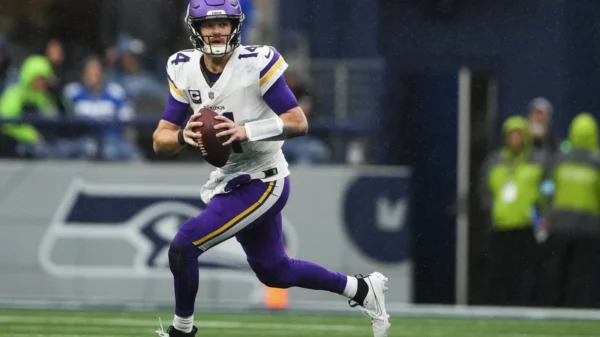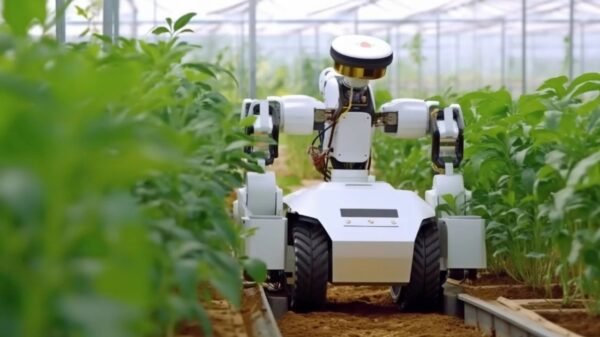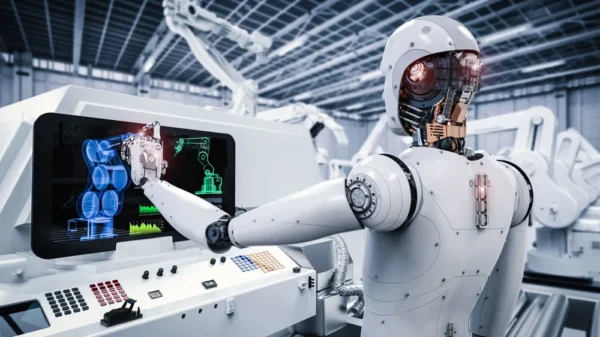Introduction to AI Motion-Tracking Technology
AI motion-tracking technology represents a groundbreaking advancement with the potential to revolutionize various fields, particularly sports and athlete training. This technology leverages artificial intelligence to analyze and interpret human movement in real-time, providing detailed insights into performance, technique, and areas for improvement. Its emergence marks a significant evolution from traditional motion-tracking systems that relied heavily on manual input and less sophisticated algorithms.
The historical context of motion-tracking technologies dates back to the early 1980s, with applications primarily in film and video game industries. These early systems used reflective markers and cameras to capture movement. However, they were limited by their need for controlled environments and significant processing time. As technology progressed, the introduction of wearable sensors and infrared cameras improved accuracy and reduced some constraints. Yet, the true revolution came with the integration of AI and machine learning into motion-tracking systems.
Artificial intelligence has drastically enhanced the capabilities of motion-tracking technology. Machine learning algorithms can now process vast amounts of data quickly and accurately, identifying patterns and anomalies that were previously undetectable. This advancement allows for real-time feedback, which is invaluable for athletes seeking to optimize their training regimens. AI-driven motion analysis can pinpoint inefficiencies in an athlete’s technique, suggest corrections, and track progress over time, making training more effective and personalized.
Beyond sports, AI motion-tracking technology is finding applications in fields such as physical therapy, ergonomics, and entertainment. In physical therapy, it aids in the rehabilitation process by providing precise movement analysis and tracking recovery progress. In ergonomics, it helps design safer and more efficient workspaces. In entertainment, it enhances the realism of animated characters and virtual reality experiences.
As AI continues to evolve, its impact on motion-tracking technology is expected to grow, offering even more sophisticated tools for improving human performance across various domains. The fusion of AI with motion-tracking systems is not just a technological advancement; it is a paradigm shift that promises to unlock new levels of human potential.
The Evolution of Home Training
The landscape of home training has undergone a significant transformation over the past few decades. What began with rudimentary exercise videos in the 1980s has evolved into highly interactive and sophisticated systems that leverage cutting-edge technology. The early days of home fitness were dominated by aerobic workout tapes, which provided a basic yet convenient way for people to maintain their fitness routines without needing to visit a gym. These videos were revolutionary at the time, but they lacked the interactive elements that today’s users demand.
The introduction of interactive gaming systems like the Nintendo Wii marked a pivotal shift in home training. Launched in 2006, the Wii brought a new level of engagement to exercise with its motion-sensing technology. This allowed users to participate in a variety of physical activities, from virtual tennis matches to dance routines, making workouts more enjoyable and engaging. The Wii’s success demonstrated the potential for gamification in fitness, paving the way for more sophisticated training tools.
In recent years, the integration of artificial intelligence (AI) has further revolutionized home training. AI-driven motion-tracking technology now provides real-time feedback and personalized workout plans, tailored to an individual’s performance and fitness goals. This advancement addresses the limitations of earlier systems by offering a more customized and effective training experience. AI can analyze a user’s movements with precision, correcting form and suggesting improvements to maximize the benefits of each exercise.
Moreover, the sophistication of AI in home training extends to virtual personal trainers and augmented reality (AR) environments. These technologies create immersive experiences that can simulate various training scenarios, offering users the guidance of a professional trainer without leaving their homes. As AI continues to evolve, it is set to redefine the boundaries of home training, making it more accessible, efficient, and enjoyable for users of all fitness levels.
AI motion-tracking technology represents a sophisticated blend of hardware and software, working in unison to monitor and analyze an athlete’s movements with impressive precision. At the heart of this technology are three core components: cameras, sensors, and machine learning algorithms. Each element plays a pivotal role in capturing and interpreting motion data, ultimately providing actionable insights for enhancing athletic performance.
The first component, cameras, are often high-resolution devices capable of capturing detailed video footage. These cameras are strategically placed around the training environment to cover all angles of the athlete’s movements. The rich visual data obtained from these cameras forms the foundational input for the motion-tracking system. High frame rates ensure that no minute detail of the motion goes unnoticed, allowing for a comprehensive analysis.
Sensors, the second key element, are frequently integrated into wearable devices such as suits, wristbands, or shoes. These sensors measure various physical parameters like acceleration, velocity, and orientation. Gyroscopes and accelerometers are commonly used types of sensors. By capturing real-time data, sensors provide an additional layer of granularity that complements the visual information from the cameras. This dual-input system ensures a more robust and holistic understanding of the athlete’s movements.
Applications in Professional Sports
AI motion-tracking technology has rapidly become an integral tool in professional sports, offering teams a competitive edge through precise data analysis and enhanced performance insights. One notable example is the NBA’s adoption of AI motion-tracking systems to scout new basketball talent. By utilizing advanced algorithms and high-definition cameras, AI technology captures and analyzes movements in real-time, providing comprehensive data on player performance.
In the NBA, teams like the Golden State Warriors have leveraged AI motion-tracking to identify promising talent. This technology records players’ movements during games and practices, breaking down every dribble, pass, and shot with incredible accuracy. By analyzing this data, coaches and scouts can gain deeper insights into a player’s strengths, weaknesses, and overall potential. For instance, the AI system can track a player’s shooting form, footwork, and reaction times, allowing teams to make informed decisions about recruitment and development.
Case studies have shown the transformative impact of AI on player performance. The Sacramento Kings, for example, have implemented AI motion-tracking to enhance their training regimens. By comparing current player data with historical performance metrics, the team can tailor training programs to address specific areas needing improvement. This targeted approach has resulted in measurable gains in player efficiency and on-court effectiveness.
Benefits for Aspiring Athletes at Home
AI motion-tracking technology brings a myriad of benefits to aspiring athletes who train at home. One of the most significant advantages is the ability to receive personalized feedback. This technology can analyze an athlete’s movements in real-time, identifying areas for improvement and providing immediate, customized advice. Such precise feedback is invaluable for refining techniques and ensuring that exercises are performed correctly, reducing the risk of injury.
Another critical benefit is the capability to track progress meticulously. AI systems can record and analyze performance data over time, offering insights into an athlete’s development. This longitudinal analysis helps athletes understand their strengths and weaknesses, enabling them to focus their efforts more effectively. Regular progress tracking also serves as a motivational tool, as athletes can see tangible evidence of their improvement, which encourages continued dedication to their training regimen.
Furthermore, AI motion-tracking technology can offer targeted improvement suggestions. By leveraging vast amounts of data and advanced algorithms, these systems can provide tailored training programs that address specific needs. Whether an athlete needs to enhance their speed, agility, strength, or endurance, AI can design a regimen that optimizes their potential. This level of customization is often unavailable to those without access to professional trainers and facilities, making AI a game-changer for home-based athletes.
Challenges and Limitations
While AI motion-tracking technology heralds a new era in athlete training, it is not without its challenges and limitations. One significant concern is data privacy. The collection and analysis of vast amounts of motion data necessitate stringent measures to protect athletes’ personal information. Ensuring that this sensitive data is securely stored and managed is paramount to maintaining trust and compliance with privacy regulations.
Another critical challenge is the dependency on high-quality hardware. For AI motion-tracking systems to function accurately, they require advanced sensors and cameras capable of capturing detailed movements. This dependency can lead to substantial costs, making the technology less accessible to smaller training facilities or individual athletes who cannot afford the investment. Additionally, the need for continuous calibration and maintenance of this hardware can be resource-intensive.
The potential for AI technology to replace human coaches is another contentious issue. While AI can provide precise data analysis and feedback, it lacks the intuitive understanding and emotional intelligence that human coaches bring to the table. Coaches offer personalized guidance, motivation, and the ability to adapt training programs based on an athlete’s unique circumstances. Striking a balance between leveraging AI for its analytical strengths and maintaining the irreplaceable human touch in coaching is essential.
Furthermore, AI motion-tracking technology may inadvertently promote a one-size-fits-all approach to training. While the data-driven insights are valuable, they may not account for the individual differences in athletes’ bodies, mindsets, and responses to training stimuli. Over-reliance on AI could lead to standardized training regimens that overlook the nuances of personalized athlete development.
Future Prospects and Innovations
As we delve into the future of AI motion-tracking technology, its potential to revolutionize athlete training and scouting becomes increasingly evident. One of the most promising prospects is the integration of augmented reality (AR) and virtual reality (VR) into AI motion-tracking systems. By combining these technologies, athletes can immerse themselves in fully interactive training environments, simulating real-world scenarios while receiving instant feedback on their performance.
Emerging trends indicate that AI motion-tracking will not only enhance the precision of performance analysis but also make it more accessible. Wearable devices and sensors, equipped with advanced AI algorithms, are evolving to provide real-time data on an athlete’s biomechanics. This data can be used to tailor training programs, optimize techniques, and minimize the risk of injury. Furthermore, the use of AI in motion-tracking can streamline the scouting process, providing coaches and scouts with comprehensive and objective evaluations of an athlete’s potential.
Another key innovation on the horizon is the development of personalized virtual coaches. Leveraging AI motion-tracking, these virtual coaches can analyze an athlete’s movements in real-time, offering personalized feedback and training regimens. This could democratize access to high-quality coaching, allowing athletes at all levels to benefit from expert guidance regardless of their geographical location.
Additionally, advancements in machine learning models are expected to enhance the predictive capabilities of AI motion-tracking systems. By analyzing vast amounts of data, these models can predict injury risks, performance plateaus, and even suggest preventative measures. This proactive approach could significantly extend athletes’ careers and improve their overall well-being.
Conclusion
In exploring the future of athlete training, the transformative potential of AI motion-tracking technology stands out prominently. Throughout this discussion, we have examined how AI-driven systems can enhance the precision of training regimens, offering real-time feedback and detailed biomechanical analysis. This technology not only provides instant corrections but also personalizes training programs to suit individual athlete needs, significantly reducing the risk of injury.
For professional athletes, AI motion-tracking offers an unprecedented level of insight into their performance, enabling them to make data-driven decisions that can lead to improved outcomes. Aspiring athletes, on the other hand, gain access to high-level coaching and analytical tools that were once reserved for elite professionals. This democratization of advanced training resources could potentially level the playing field, allowing emerging talents to develop more rapidly and effectively.
In summary, the adoption of AI motion-tracking technology heralds a new era in athlete training. Its ability to provide meticulous feedback, customize training plans, and mitigate injury risks positions it as a game-changer in sports and fitness. As this technology continues to evolve, it promises to further revolutionize how athletes train, perform, and achieve their goals, underscoring its profound impact on the future of sports and fitness training.



































